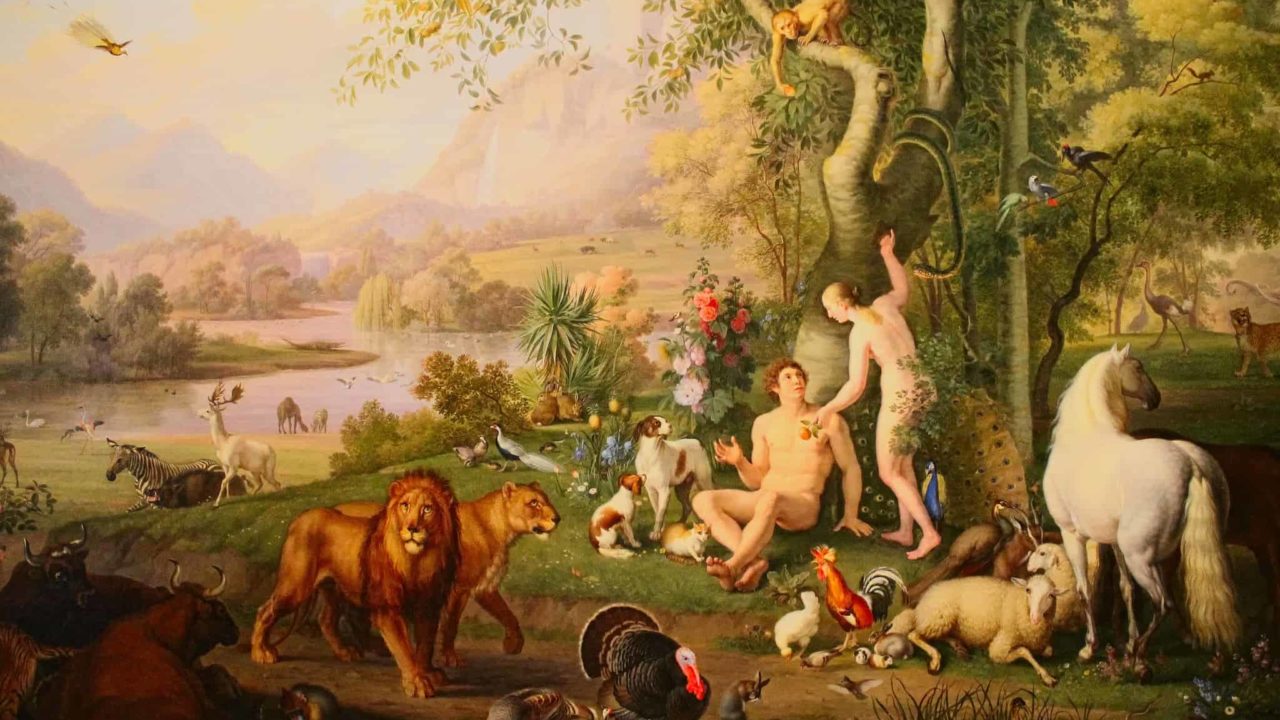Why Christians are Reading the Rav
To be a person of faith is to be lonely in this world.

The nature of the dilemma can be stated in a three-word sentence. I am lonely.
–Rabbi Joseph B. Soloveitchik
In 2015, I was invited to a conference held at a Catholic University in Spain, celebrating the first Spanish translation of The Lonely Man of Faith, the seminal philosophical essay of Rabbi Joseph Soloveitchik (my great uncle), reverently referred to by many Orthodox Jews as “the Rav.” Published 50 years earlier, the essay contrasts two biblical accounts of the creation of man and teases out two personas, known as Adam the First and Adam the Second. In the first chapter of Genesis, humanity is created in the image of God and instructed by the Almighty to “fill the world and subdue it.” Adam the First, Rabbi Soloveitchik suggests, is majestic; through his God-like creative capacities he seeks scientific breakthroughs, to cure disease, to build cities and countries, to advance the health and comfort of mankind.
But then there is Adam the Second, who in Genesis 2 is created from the dust of the earth and remains in the sanctity of the garden of Eden, “to work and protect it.” This represents the religious aspect of man, man who is ever aware of his finitude, who finds fulfillment not in majestic achievement but in an intimate relationship with a personal God.
These two accounts are given, Rabbi Soloveitchik argued, because both are accurate; both Adam I and Adam II are divinely desired aspects of the human experience. One who is devoted to religious endeavors is reminded that “he is also wanted and needed in another community, the cosmic-majestic,” and when one works on behalf of civilization, the Bible does not let him forget “that he is a covenantal being who will never find self-fulfillment outside of the covenant.” The man of faith is not fully of the world, but neither can he reject the world. To join the two parts of the self may not be fully achievable, but it must nevertheless be our goal.
In his letter of invitation to the conference, the president of the Spanish university reflected on how Rabbi Soloveitchik’s writings spoke to his own vocation. As a leader of a Christian school, he said he grappled constantly with the challenge of being an hombre de fe in a Europe that, once the cradle of Christendom, was now suddenly secular:
As Adam the First understandably and correctly busies himself with the temporal concerns of this world, we encourage our students to not lose sight, within their own hearts, of Adam the Second, the thirsting Adam that longs for a redemption that our technological advances cannot quench. We hope that our students, who come to our university seeking degree titles that will translate into jobs, will leave it also with awakened minds and hearts that fully recognize the deep aspirations that lie within their youthful spirits, and which The Lonely Man of Faith so eloquently describes.
The letter reflected a fascinating phenomenon. As Orthodox Jews mark this year the 25th anniversary of Rabbi Soloveitchik’s passing, more and more of his works are being studied, savored, appreciated, and applied to people’s own lives—by Christians. As interesting as this is, it should not be surprising. The Lonely Man of Faith actually originated, in part, in a talk to Catholic seminarians, and today it is Christians who are particularly shocked by the rapidity with which a culture that was once Christian has turned on them, so that now people of faith are quite lonely in the world at large. In his essay, Rabbi Soloveitchik notes that though the tension between Adam I and Adam II is always a source of angst, “the contemporary man of faith is, due to his peculiar position in secular society, lonely in a special way,” as our age is “technically minded, self-centered, and self-loving, almost in a sickly narcissistic fashion, scoring honor upon honor, piling up victory upon victory, reaching for the distant galaxies, and seeing in the here-and-now sensible world the only manifestation of being.”
Now that the world of Adam I seems wholly divorced from that of Adam II, people of faith seek guidance in the art of bridging the two; and if, 70 years ago, Reinhold Niebhur was a theologian who spoke for a culture where Christianity was the norm, Rabbi Soloveitchik is a philosopher for Jews and Christians who are outsiders. The Catholic philosopher R.J. Snell, in a Christian reflection inspired by the Rav’s writings, wrote that “like Joseph B. Soloveitchik in The Lonely Man of Faith, I am lonely,” and he tells us why:
In science, my faith is judged obscurantist; in ethics, mere animus; in practicality, irrelevant; in love, archaic. In the square, I am silenced; at school, mocked; in business, fined; at entertainment, derided; in the home, patronized; at work, muffled. My leaders are disrespected; my founder blasphemed by the new culture, new religion, and new philosophy which…suffers from an aversion to the fullness of questions, insisting that questions are meaningful only when limited to a scope much narrower than my catholic range of wonder.
Yet Rabbi Soloveitchik’s thesis remains that even when society rejects us, we cannot give up on society, but we also cannot amputate our religious identity from our very selves. Adam I and Adam II must be bridged. This will not be easy, but a theme throughout Rabbi Soloveitchik’s writings is that all too often religion is seen as a blissful escape from life’s crises, while in truth the opposite is the case. In the words of Reuven Ziegler, Rabbi Soloveitchik insisted that “religion does not offer an escape from reality, but rather provides the ultimate encounter with reality.” Traditional Jews and Christians in the West face cultural challenges to their faith—disdain, scorn, and even hate—but if the challenge is faced with fortitude, sophistication, and honor, it will be a religious endeavor worthy of being remembered.
And as both traditional Jews and Christians face this challenge, it will often be as compatriots, in a fellowship that we may not have foreseen 50 years ago. After attending the conference, I was emailed by another member of the administration, the rector of the university. He thanked me “for the pleasure of sharing that deep friendship which is a sign of the community inspired by the principles of the second Adam,” and added, “[I] really enjoyed the time we passed together and the reading of the book of Rabbi Soloveitchik,” which was, he reflected, “so stimulating for a better understanding of my own life and my faith.” To be a person of faith is indeed to be lonely in this world. But more and more, lonely men and women of several faiths may be brought together by The Lonely Man of Faith.
This essay was originally published in Commentary.
To be a person of faith is to be lonely in this world.
To be a person of faith is to be lonely in this world.

